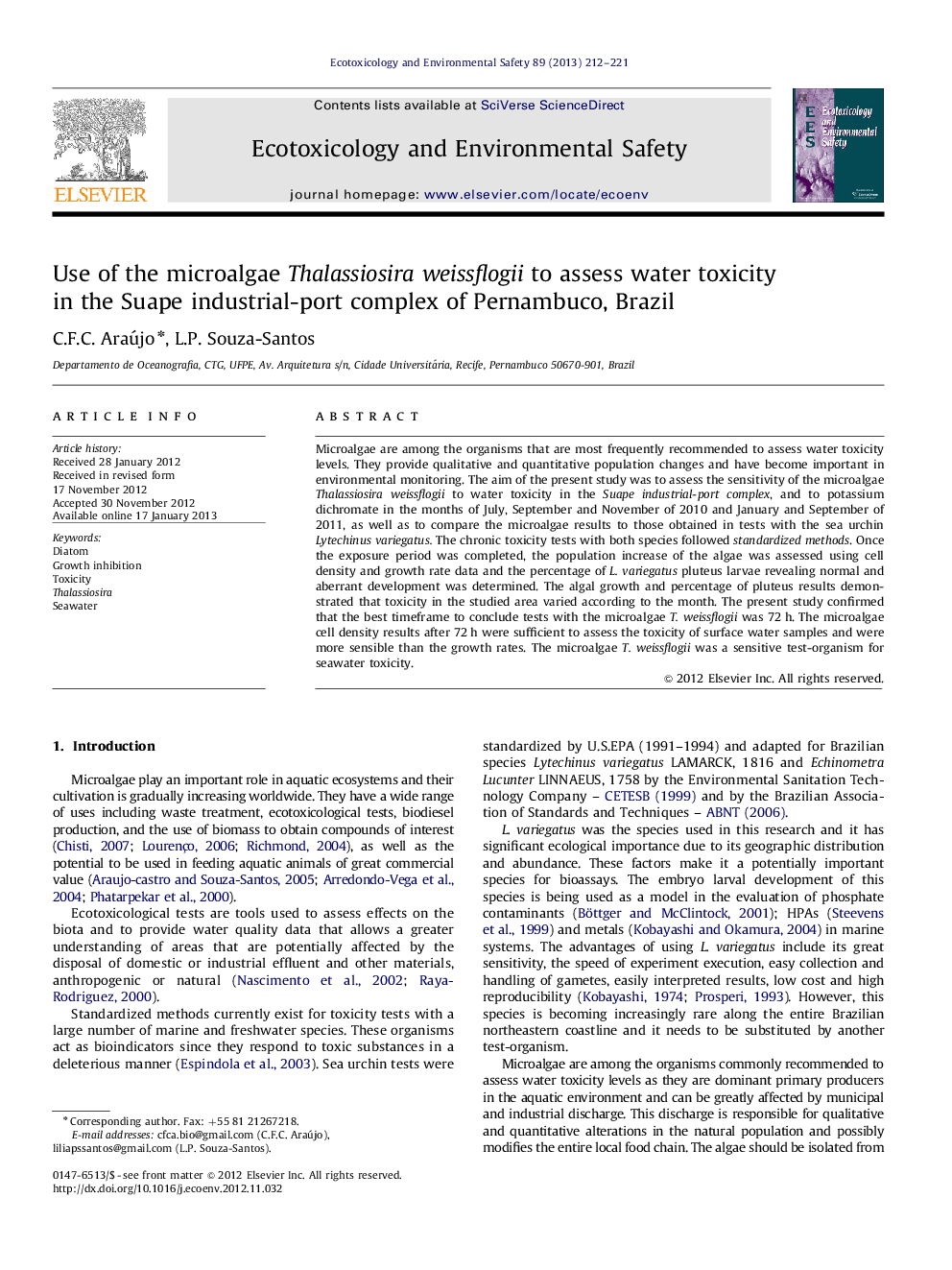| Article ID | Journal | Published Year | Pages | File Type |
|---|---|---|---|---|
| 4420604 | Ecotoxicology and Environmental Safety | 2013 | 10 Pages |
Microalgae are among the organisms that are most frequently recommended to assess water toxicity levels. They provide qualitative and quantitative population changes and have become important in environmental monitoring. The aim of the present study was to assess the sensitivity of the microalgae Thalassiosira weissflogii to water toxicity in the Suape industrial-port complex, and to potassium dichromate in the months of July, September and November of 2010 and January and September of 2011, as well as to compare the microalgae results to those obtained in tests with the sea urchin Lytechinus variegatus. The chronic toxicity tests with both species followed standardized methods. Once the exposure period was completed, the population increase of the algae was assessed using cell density and growth rate data and the percentage of L. variegatus pluteus larvae revealing normal and aberrant development was determined. The algal growth and percentage of pluteus results demonstrated that toxicity in the studied area varied according to the month. The present study confirmed that the best timeframe to conclude tests with the microalgae T. weissflogii was 72 h. The microalgae cell density results after 72 h were sufficient to assess the toxicity of surface water samples and were more sensible than the growth rates. The microalgae T. weissflogii was a sensitive test-organism for seawater toxicity.
► Thalassiosira weissflogii is efficient for analyzing the quality of sea water. ► The methodological tests indicated that 10 mL samples can be used successfully and Optimum duration of test is 72 h. ► Evaluation of cell density is more significant than growth rates. ► T. weissflogii is sensitive to potassium dichromate.
